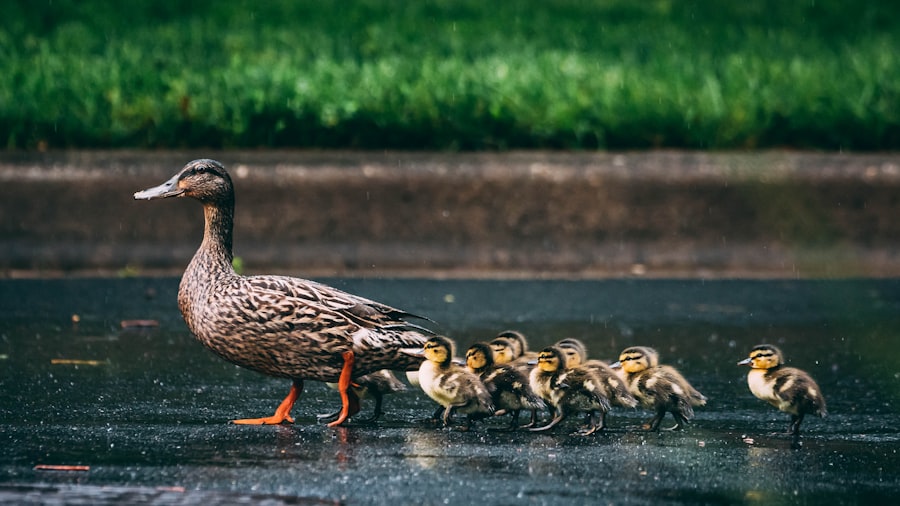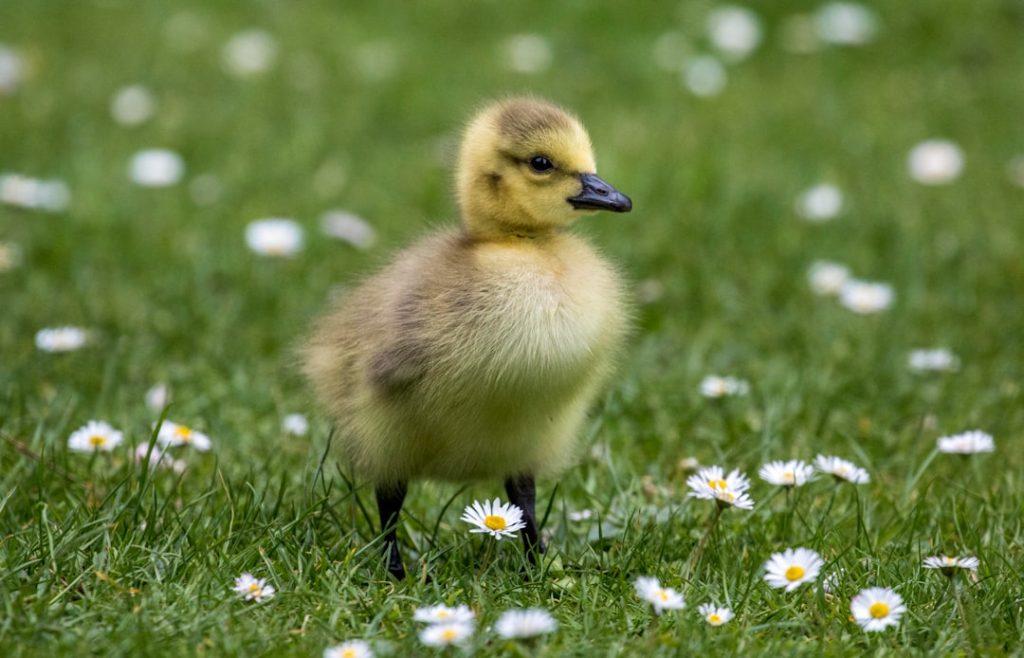Duck breeding is an important aspect of poultry farming, as ducks are a valuable source of meat and eggs. Ducks are known for their high fertility rates and adaptability to various environmental conditions, making them a popular choice for small-scale and commercial poultry farmers. Breeding ducks can be a rewarding endeavor, but it requires careful planning, management, and understanding of the breeding process. Duck breeding involves selecting the right breeding stock, understanding the breeding season and mating behavior, managing fertility and hatching success, and addressing common health issues. This article will provide a comprehensive guide to duck breeding, covering all these aspects and offering valuable tips for successful duck breeding and rearing.
Table of Contents
- 1 The Importance of Selecting the Right Breeding Stock
- 2 Understanding the Breeding Season and Mating Behavior of Ducks
- 3 Factors Affecting Fertility and Hatching Success
- 4 Tips for Managing Duck Breeding and Rearing
- 5 Common Health Issues in Duck Breeding
- 6 Conclusion and Future Considerations for Duck Breeding
- 7 FAQs
Key Takeaways
- Duck breeding requires careful selection of breeding stock to ensure desirable traits and genetic diversity.
- Understanding the breeding season and mating behavior of ducks is crucial for successful reproduction.
- Factors such as nutrition, environment, and genetics can affect fertility and hatching success in duck breeding.
- Proper management and rearing practices are essential for successful duck breeding and raising healthy ducklings.
- Common health issues in duck breeding include respiratory infections, parasites, and nutritional deficiencies.
The Importance of Selecting the Right Breeding Stock
Selecting the right breeding stock is crucial for successful duck breeding. The breeding stock should be healthy, genetically superior, and well-adapted to the local environment. When choosing breeding ducks, it is important to consider their breed characteristics, such as size, growth rate, egg production, and resistance to diseases. Additionally, selecting ducks with good conformation and body structure is essential for producing healthy offspring. It is also important to consider the age and reproductive history of the breeding stock, as older ducks may have reduced fertility and hatchability. Furthermore, genetic diversity should be maintained within the breeding stock to prevent inbreeding and maintain overall flock health and productivity. Overall, selecting the right breeding stock is essential for ensuring the long-term success and sustainability of duck breeding operations.
Selecting the right breeding stock is a critical decision that can have a significant impact on the overall productivity and profitability of a duck breeding operation. It is important to source breeding stock from reputable breeders or hatcheries that prioritize genetic selection, health management, and proper breeding practices. When selecting breeding ducks, it is essential to assess their physical condition, including body weight, feather quality, leg strength, and overall vitality. Ducks with any signs of illness or deformities should be avoided as they may pass on undesirable traits to their offspring. Additionally, it is important to consider the temperament and behavior of the breeding stock, as aggressive or overly timid ducks may not be suitable for breeding. Finally, conducting regular health checks and vaccinations for the breeding stock is essential for preventing the spread of diseases and maintaining overall flock health. In conclusion, selecting the right breeding stock is a critical step in ensuring the success and sustainability of duck breeding operations.
Understanding the Breeding Season and Mating Behavior of Ducks
Ducks are seasonal breeders, with peak reproductive activity occurring in the spring and early summer months. Understanding the natural breeding season of ducks is essential for optimizing mating behavior and fertility rates. During the breeding season, male ducks (drakes) become more vocal and display courtship behaviors to attract female ducks (hens). It is important to provide suitable nesting sites and materials for the hens to lay their eggs, as they prefer secluded areas with ample bedding material for nesting. Additionally, observing the mating behavior of ducks can help identify infertile or non-productive individuals that may need to be replaced in the breeding stock. Overall, understanding the breeding season and mating behavior of ducks is essential for maximizing fertility rates and ensuring successful reproduction.
The mating behavior of ducks is an important aspect of successful duck breeding. Male ducks (drakes) play a crucial role in initiating courtship displays to attract female ducks (hens) for mating. Drakes may perform elaborate displays such as head bobbing, wing flapping, and vocalizations to court hens and establish mating pairs. It is important to provide adequate space and privacy for mating pairs to engage in natural mating behaviors without interference from other ducks or external disturbances. Additionally, observing mating behavior can help identify any reproductive issues or mating problems that may affect fertility rates. Understanding the natural mating behavior of ducks is essential for creating optimal breeding conditions and maximizing reproductive success. Overall, a thorough understanding of the breeding season and mating behavior of ducks is crucial for successful duck breeding operations.
Factors Affecting Fertility and Hatching Success
Several factors can affect fertility and hatching success in duck breeding operations. Environmental factors such as temperature, humidity, and lighting can influence reproductive performance in ducks. Providing suitable nesting sites with proper bedding material and maintaining optimal environmental conditions can help improve fertility rates and hatchability. Additionally, nutrition plays a critical role in reproductive success, as inadequate or imbalanced diets can lead to reduced fertility and hatchability. It is important to provide ducks with a balanced diet that meets their nutritional requirements during the breeding season to support optimal reproductive performance. Furthermore, managing stress factors such as overcrowding, predator threats, or disease outbreaks is essential for maintaining high fertility rates and hatching success in duck breeding operations.
Fertility and hatching success in duck breeding can also be influenced by genetic factors within the breeding stock. Selecting genetically superior ducks with high fertility rates and strong maternal instincts can help improve reproductive performance in duck flocks. It is important to monitor the reproductive history of individual ducks within the breeding stock to identify any potential fertility issues or low hatchability rates. Additionally, managing the male-to-female ratio within the flock is essential for optimizing fertility rates and ensuring successful mating behavior. Finally, proper egg handling and incubation practices are crucial for maximizing hatching success in duck breeding operations. Overall, addressing environmental, nutritional, genetic, and management factors is essential for optimizing fertility rates and hatching success in duck breeding.
Tips for Managing Duck Breeding and Rearing
Managing duck breeding and rearing requires careful planning, attention to detail, and proactive management practices. Providing suitable nesting sites with ample bedding material and privacy can help encourage natural nesting behaviors in hens and improve hatchability rates. Additionally, monitoring the male-to-female ratio within the flock can help optimize mating behavior and fertility rates. It is important to conduct regular health checks and vaccinations for the breeding stock to prevent the spread of diseases and maintain overall flock health. Furthermore, providing ducks with a balanced diet that meets their nutritional requirements during the breeding season is essential for supporting optimal reproductive performance. Finally, implementing proper egg handling and incubation practices can help maximize hatching success in duck breeding operations.
Managing duck breeding and rearing also involves addressing common health issues that may affect reproductive performance in duck flocks. Preventing diseases such as avian influenza, duck viral enteritis, or botulism through biosecurity measures and vaccination programs is essential for maintaining overall flock health and productivity. Additionally, managing stress factors such as overcrowding, predator threats, or extreme weather conditions can help reduce reproductive stress in ducks and improve fertility rates. It is important to provide ducks with access to clean water sources and suitable shelter to minimize environmental stressors that may affect reproductive performance. Overall, proactive management practices that address nesting behavior, nutrition, health, and environmental factors are essential for successful duck breeding and rearing operations.
Common Health Issues in Duck Breeding

Duck breeding operations are susceptible to various health issues that can affect reproductive performance and overall flock health. Avian influenza is a highly contagious viral disease that can cause respiratory symptoms, decreased egg production, and high mortality rates in duck flocks. Implementing strict biosecurity measures such as controlling access to the farm, disinfecting equipment, and monitoring wild bird populations can help prevent the spread of avian influenza in duck breeding operations. Additionally, duck viral enteritis (DVE) is a highly infectious viral disease that can cause hemorrhagic enteritis in ducks, leading to decreased fertility rates and hatchability. Vaccination programs and strict biosecurity measures are essential for preventing DVE outbreaks in duck flocks.
Botulism is another common health issue that can affect duck breeding operations, especially in wetland or waterfowl production systems. Botulism is caused by toxins produced by Clostridium botulinum bacteria in water sources contaminated with decaying organic matter. Providing clean water sources and monitoring water quality can help prevent botulism outbreaks in duck flocks. Additionally, managing stress factors such as overcrowding or extreme weather conditions can help reduce susceptibility to infectious diseases in duck breeding operations. Overall, implementing proactive health management practices such as vaccination programs, biosecurity measures, and environmental management is essential for preventing common health issues in duck breeding operations.
Conclusion and Future Considerations for Duck Breeding
In conclusion, duck breeding is a valuable aspect of poultry farming that requires careful planning, management, and understanding of the breeding process. Selecting the right breeding stock, understanding the breeding season and mating behavior of ducks, managing fertility and hatching success, addressing common health issues, and implementing proactive management practices are essential for successful duck breeding operations. Future considerations for duck breeding include ongoing research into genetic selection for improved reproductive performance, developing sustainable production systems that minimize environmental impact, and addressing emerging health challenges such as antibiotic resistance and zoonotic diseases. Overall, continued innovation and best management practices are essential for ensuring the long-term success and sustainability of duck breeding operations.
In conclusion, duck breeding is a valuable aspect of poultry farming that requires careful planning, management, and understanding of the breeding process. Selecting the right breeding stock, understanding the breeding season and mating behavior of ducks, managing fertility and hatching success, addressing common health issues, and implementing proactive management practices are essential for successful duck breeding operations. Future considerations for duck breeding include ongoing research into genetic selection for improved reproductive performance, developing sustainable production systems that minimize environmental impact, and addressing emerging health challenges such as antibiotic resistance and zoonotic diseases. Overall, continued innovation and best management practices are essential for ensuring the long-term success and sustainability of duck breeding operations. It is important for duck breeders to stay informed about advancements in the field and to adapt their practices accordingly in order to maintain a high standard of animal welfare and production efficiency.
If you’re interested in learning more about poultry farming, you might also want to check out this insightful article on how many chickens you need for a family of 4. It provides valuable information on the ideal number of chickens to keep for a small family, which can be helpful when considering duck breeding as well. Understanding the dynamics of poultry farming and coop management is essential for successful breeding and raising of ducks.
FAQs
What is duck breeding?
Duck breeding refers to the process of mating and reproducing ducks in order to produce offspring.
How do ducks reproduce?
Ducks reproduce through sexual reproduction, where a male duck (drake) mates with a female duck (hen) to fertilize her eggs.
At what age do ducks start breeding?
Ducks typically reach sexual maturity and start breeding at around 5-6 months of age, although this can vary depending on the breed and individual duck.
How often do ducks lay eggs?
Most duck breeds lay eggs every 24-26 hours, with peak egg production occurring in the spring and summer months.
How long does it take for duck eggs to hatch?
Duck eggs typically take around 28 days to hatch, although this can vary slightly depending on the breed and specific incubation conditions.
What are some common duck breeding practices?
Common duck breeding practices include providing a suitable nesting area for hens, ensuring proper nutrition and care for breeding ducks, and monitoring egg production and incubation.
What are some common challenges in duck breeding?
Common challenges in duck breeding include infertility, poor egg production, and difficulties in hatching and raising ducklings. Proper management and care can help address these challenges.
Meet Walter, the feathered-friend fanatic of Florida! Nestled in the sunshine state, Walter struts through life with his feathered companions, clucking his way to happiness. With a coop that’s fancier than a five-star hotel, he’s the Don Juan of the chicken world. When he’s not teaching his hens to do the cha-cha, you’ll find him in a heated debate with his prized rooster, Sir Clucks-a-Lot. Walter’s poultry passion is no yolk; he’s the sunny-side-up guy you never knew you needed in your flock of friends!







